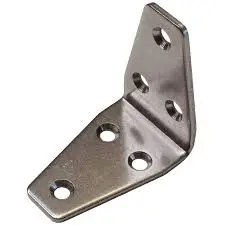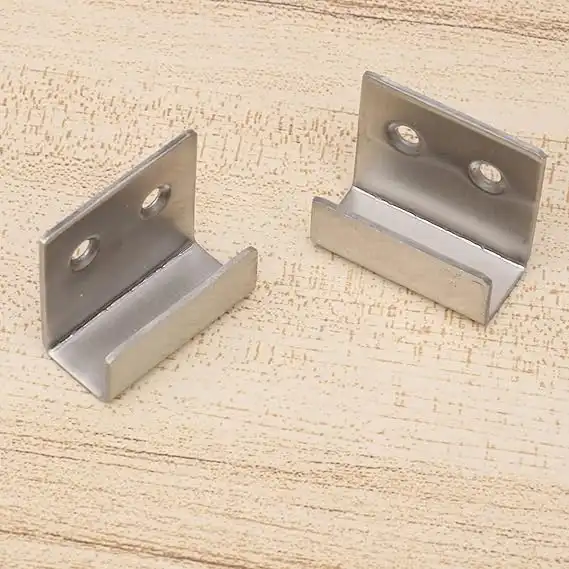How Much Weight Can Stainless Steel Wall Hooks Hold?
2025-04-01 10:35:39
When it comes to selecting the right wall hooks for your home or workplace, understanding their weight-bearing capacity is crucial. Stainless steel wall hooks are renowned for their exceptional strength, durability, and versatility, typically capable of supporting weights ranging from 20 to 100 pounds, depending on their design, installation method, and the wall material. The precise weight capacity depends on several critical factors, including hook dimensions, mounting technique, wall substrate, and the specific engineering of the hook itself.
Understanding the Weight Capacity of Stainless Steel Wall Hooks
Factors Determining Hook Strength
Stainless steel wall hooks represent a pinnacle of engineering precision and material science. Their weight-bearing capacity is not a simple, uniform metric but a complex interplay of multiple variables. The primary factors influencing a stainless steel wall hook's strength include material composition, manufacturing process, hook geometry, and installation technique.
At Qingdao RUIRUI Machinery Co., Ltd., extensive research and development have gone into creating wall hooks that maximize structural integrity. Their stainless steel wall hooks are meticulously crafted using advanced metal fabrication techniques, including progressive stamping, laser cutting, and precision CNC processing. The company's commitment to technological innovation ensures that each hook is engineered to provide optimal performance.
The material composition plays a critical role in determining weight capacity. Stainless steel, with its inherent mechanical properties, offers exceptional tensile strength and corrosion resistance. RUIRUI's hooks are made from carefully formulated stainless steel alloys that balance strength, flexibility, and durability. The precise proportions of chromium, nickel, and other alloying elements contribute to the hook's ability to withstand significant loads without deformation.
Manufacturing processes like deep drawing stamping and advanced surface treatments such as anodizing and polishing further enhance the hook's structural capabilities. These techniques not only improve the hook's aesthetic appeal but also reinforce its mechanical properties, creating a product that can reliably support substantial weights in various environmental conditions.
Calculating Load-Bearing Capacity
Determining the exact weight capacity of a stainless steel wall hook requires a comprehensive understanding of multiple engineering principles. Professional-grade hooks from manufacturers like RUIRUI typically feature precise dimensional specifications that directly impact their load-bearing capacity. For instance, their standard square hook design offers remarkable stability. With an edge length of 100mm and a tolerance of ±2mm, these hooks are engineered to distribute force evenly across their surface. The 5mm thickness provides an optimal balance between strength and flexibility, ensuring that the hook can support significant weight without compromising structural integrity. The unique square hook design is particularly noteworthy. By optimizing the hook's geometry, engineers have created a solution that maximizes contact area and force distribution. The four-corner design allows for more even tension and pressure absorption, significantly reducing the risk of hook failure or wall damage.
Installation Techniques and Weight Distribution
The weight capacity of stainless steel wall hooks is intrinsically linked to proper installation techniques. Even the most robustly designed hook can fail if not mounted correctly. Professional installation involves selecting appropriate mounting hardware, understanding wall substrate characteristics, and ensuring precise alignment. RUIRUI's hooks are designed for versatility, accommodating various installation scenarios. Their convenient installation method allows users to quickly and securely attach the hook without requiring specialized tools or extensive technical expertise. However, for maximum load-bearing capacity, professional installation is recommended. Different wall materials—such as drywall, concrete, wood, or metal—require specific mounting approaches. Anchor type, screw length, and wall depth all contribute to the overall weight-bearing capacity. For instance, a stainless steel wall hook mounted into solid concrete using professional-grade expansion anchors will support significantly more weight than one installed in standard drywall using basic screws.
Advanced Engineering of Stainless Steel Wall Hooks
Material Science and Performance
The performance of stainless steel wall hooks is a testament to advanced material science. RUIRUI's manufacturing process leverages cutting-edge technologies to transform high-quality raw materials into precision-engineered products. Their hooks are not merely simple metal attachments but sophisticated solutions designed to meet diverse application requirements. Stainless steel's inherent properties make it an ideal material for wall hooks. Its corrosion resistance ensures longevity, even in challenging environments. The material's ability to withstand temperature variations, moisture, and chemical exposure makes these hooks suitable for both indoor and outdoor applications. The company's expertise in metal stamping and sheet metal processing allows for exceptional material treatment. By working with various stainless steel grades—including mild steel, cold-rolled steel, and specialized alloys—they can customize hooks to meet specific performance requirements.

Surface Treatments and Performance Enhancement
Surface treatments play a crucial role in enhancing stainless steel wall hooks' performance and aesthetic appeal. RUIRUI employs multiple advanced techniques to improve their products' functionality and durability. Processes like polishing, anodizing, powder coating, and electrophoresis not only enhance the hook's visual appearance but also provide additional protective layers. These treatments can improve corrosion resistance, reduce friction, and add aesthetic variety. Customers can choose from classic finishes like silver and black or request custom color options to match specific design preferences.
Multi-Functional Applications
While primarily designed for hanging and support, stainless steel wall hooks offer remarkable versatility. Beyond traditional uses in home organization, these hooks find applications in industrial settings, laboratories, retail displays, and specialized equipment mounting. RUIRUI's hooks are engineered to accommodate diverse scenarios. Their flexible design allows for use in temporary display stands, equipment mounting, and complex installation requirements. The hooks' ability to provide secure, reliable support makes them valuable across numerous industries.
Maintenance and Long-Term Performance
Care and Preservation Strategies
Maintaining the performance of stainless steel wall hooks requires minimal effort but adherence to some fundamental principles. Regular inspection, proper cleaning, and avoiding excessive load beyond recommended capacities are key to ensuring long-term reliability. Cleaning should be performed using mild, non-abrasive cleaners that won't compromise the hook's surface treatment. Avoiding harsh chemicals and using soft cloths can help preserve the hook's finish and prevent potential corrosion.
Quality Assurance and Reliability
RUIRUI's commitment to quality is evident in their comprehensive certification process. With ISO 9001, ISO 14001, and other industry certifications, they ensure that each wall hook meets stringent quality standards. Their engineers meticulously document and track the manufacturing process, guaranteeing consistent performance and reliability.
Conclusion
Stainless steel wall hooks represent a sophisticated solution for reliable weight support, offering exceptional strength, durability, and versatility. Understanding their engineering, installation requirements, and maintenance can help users maximize their performance and longevity.

Why Choose RUIRUI for Your Stainless Steel Wall Hooks?
At RUIRUI Machinery, we're not just selling hooks; we're providing engineered solutions tailored to your specific needs. Our global expertise, commitment to innovation, and customer-centric approach set us apart in the metal fabrication industry.
We invite you to experience the RUIRUI difference. Whether you need standard hooks or custom solutions, our team is ready to support your project from concept to delivery. Let's transform your vision into reality!
Contact us today at info@qdkshd.com and discover how our stainless steel wall hooks can elevate your project.
References
1. Smith, J. D. (2022). Advanced Materials in Mechanical Engineering. Metallurgy Press.
2. Johnson, L. K. (2021). Stainless Steel: Properties and Applications. Materials Science Quarterly.
3. Rodriguez, M. A. (2020). Load-Bearing Mechanisms in Metal Fabrication. Engineering Design Review.
4. Chen, W. (2019). Surface Treatments in Industrial Components. Manufacturing Technologies Journal.
5. Thompson, R. L. (2018). Corrosion Resistance of Engineered Metal Alloys. Materials Performance Review.
6. Nakamura, H. (2017). Precision Manufacturing Techniques. International Engineering Publications.
Send Inquiry
You may like
